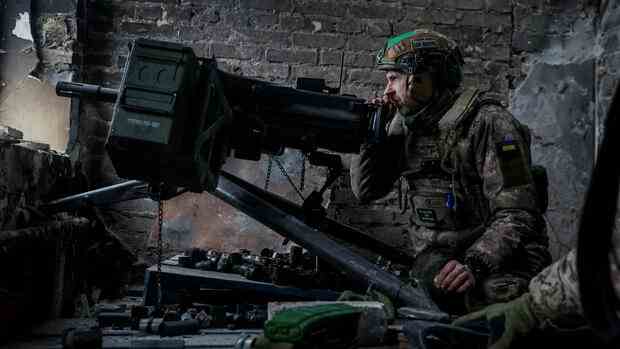For Ukrainians, the situation remains tense.
(Photo: via REUTERS)
Vienna The war in Ukraine has entered an inscrutable phase. Calming down is not in sight, the fierce fighting continues. In the Donbass in particular, the fighting claims many lives every day. The Ukrainians are holding out in the city of Bakhmut under precarious conditions, and their supply routes are increasingly coming under fire.
Further south, at Wuhledar, the Russians are wearing themselves out in hitherto unsuccessful attacks, inflicting heavy casualties on some of their best-trained units. In the northern Donbass, near Kreminna, Moscow’s troops have succeeded in gaining tactical territory. But the front lines hardly shift.
Accordingly, observers find it difficult to define what is happening on the battlefield. The question is still open as to whether the previously locally limited Russian attacks are already part of the expected and feared offensive. It is also possible that Moscow is no longer capable of such an offensive given the logistical problems and the huge losses in the twelve months of the war.
For the Ukrainians, however, the security situation remains tense. This is shown by the renewed drone attacks and the power outages in Odessa on Monday. There is daily shooting on the fronts not only in the Donbass, but also along the border with Russia.
The Ukrainians rely primarily on pinpricks because they have to spread their forces over large areas. On Sunday there was a drone attack on the Belarusian military airfield Machulishchi, which apparently also damaged a modern Russian spy plane. Russian nationalists believe Kiev was behind the attack, but Belarusian “partisans” have also claimed responsibility for the attack.
According to the British secret service, more than a dozen ammunition and fuel depots have exploded in the Russian-controlled south-east of Ukraine in the past few days – including in Mariupol, which was previously out of the range of the artillery supplied by the West. Due to Ukraine’s greater radius of action, Moscow’s options for bringing reinforcements close to the front are also limited.
Over the weekend, the deputy head of the Ukrainian military intelligence service gave insights into possible offensive plans: “We are trying to drive a wedge in the Russian front – between Crimea and the Russian mainland,” Vadim Skibizky told the Funke Group newspapers.
Ukraine army needs western tanks for counter offensive
Experts have been discussing the advantages of an advance through the Zaporizhia region for months, and an attack there would not come as a surprise to Moscow. It is therefore also possible that this takes place at a completely different place. However, Ukrainian military officials also make it clear that a counteroffensive is unthinkable without the speedy delivery of modern western tanks.
Added to this dependency is domestic political turbulence. President Volodymyr Zelensky, for example, dismissed a number of high-ranking officials in the Defense Ministry and the National Guard as a result of the scandal surrounding alleged enrichment from overpriced food deliveries to the army.
Major General Eduard Moskalyov also lost his job as commander of the troops in Donbass at the weekend. Selenski did not give a reason for the dismissal. A connection with the difficult situation in Bachmut is obvious. Militarily, losing the city would not be a catastrophe, but politically it has long since become a central symbol of resistance against Russia.
More: More than a trillion dollars conceivable – the reconstruction of Ukraine becomes the task of the century
